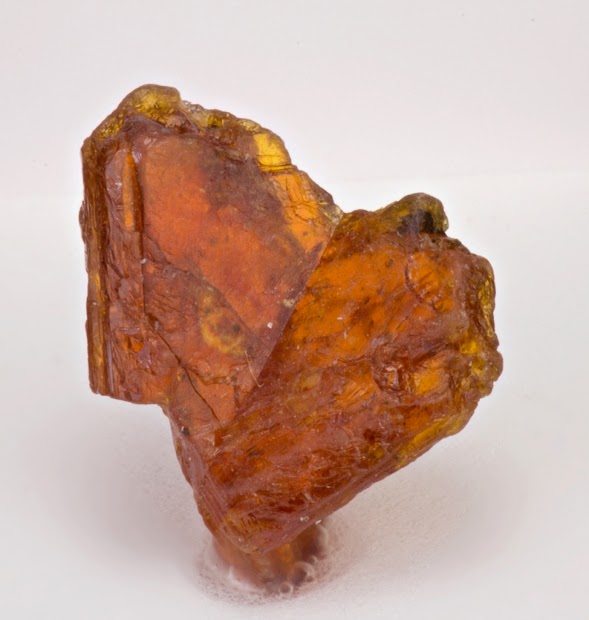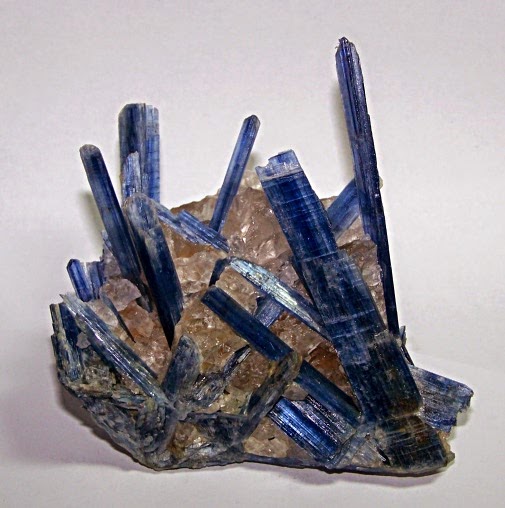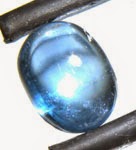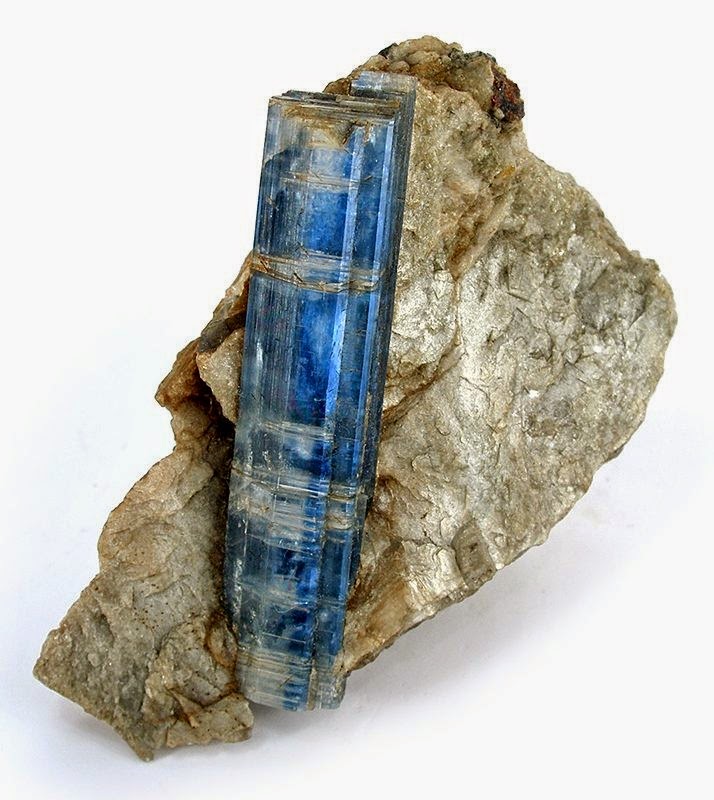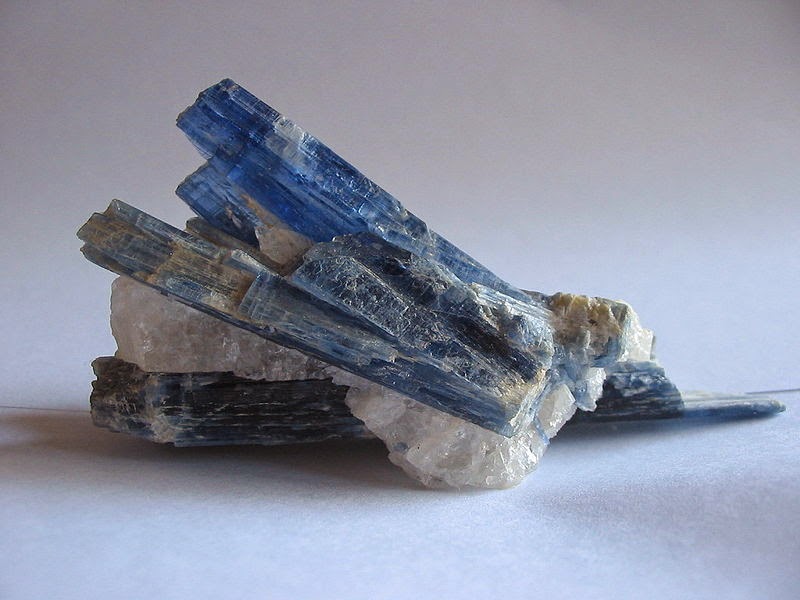
Chemical Formula: Al2(SiO4)O
Locality: Common world wide.
Name Origin: From the Greek kyanos = “blue.”
Kyanite, whose name derives from the Greek word kuanos sometimes referred to as “kyanos”, meaning deep blue, is a typically blue silicate mineral, commonly found in aluminium-rich metamorphic pegmatites and/or sedimentary rock. Kyanite in metamorphic rocks generally indicates pressures higher than four kilobars. Although potentially stable at lower pressure and low temperature, the activity of water is usually high enough under such conditions that it is replaced by hydrous aluminosilicates such as muscovite, pyrophyllite, or kaolinite. Kyanite is also known as disthene, rhaeticite and cyanite.
Kyanite is a member of the aluminosilicate series, which also includes the polymorph andalusite and the polymorph sillimanite. Kyanite is strongly anisotropic, in that its hardness varies depending on its crystallographic direction. In kyanite, this anisotropism can be considered an identifying characteristic.
Occurrence
Kyanite occurs in gneiss, schist, pegmatite, and quartz veins resulting from high pressure regional metamorphism of principally pelitic rocks. It occurs as detrital grains in sedimentary rocks. It occurs associated with staurolite, andalusite, sillimanite, talc, hornblende, gedrite, mullite and corundum.
Kyanite occurs in Manhattan schist, formed under extreme pressure as a result of the two landmasses that formed supercontinent Pangaea.
Physical Properties
Cleavage: {100} Perfect, {010} Imperfect
Color: Blue, White, Gray, Green, Black.
Density: 3.56 – 3.67, Average = 3.61
Diaphaneity: Translucent to transparent
Fracture: Brittle – Generally displayed by glasses and most non-metallic minerals.
Hardness: 4-7
Luminescence: Non-fluorescent.
Luster: Vitreous – Pearly
Streak: white
Photos :
